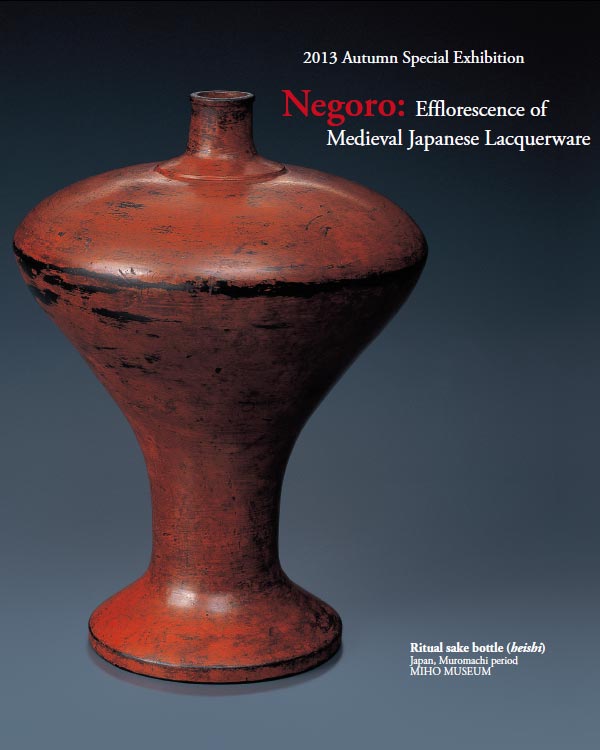
|
Red lacquerware with an undercoat of black lacquer covered
by a coat of red lacquer used as vessels for food and drink
offerings to the gods and buddhas, tableware and drinking
vessels, tea utensils, and stationery came to be known as
negoro. This appellation originates from Negoro-ji, a temple
in Kishu domain (now Wakayama Prefecture) that was extremely
prosperous from the Kamakura to Nanbokuchō period. During
the siege of Negoro-ji in 1585 by Toyotomi Hideyoshi
(1536–1598), the temple was set to flames and the artisans
who escaped purportedly spread the lacquer technique of
negoro to various parts of Japan.
After long years of use, the red lacquer on the surface of negoro ware wore away to reveal a black layer underneath. These lacquered objects, which revealed their beauty over time, were highly prized by tea practitioners and art aficionados. Negoro—which possesses the mystique of a solid, practical form, the distinctive colors of red and black, a soft lacquered surface, and the warmth of a wooden base—embodies the beauty of early Japanese applied art. This exhibition presents over 200 outstanding works of negoro ware, including the Hinomaru bon (a ritual tray used by the monks secluded in the Nigatsu-dō (literally, the Hall of the Second Month) during the Omizutori or Water-Drawing ritual at Tōdai-ji Temple), vessels used to offer sacred sake to the gods, trays with indented corners and beveled corners (Important Cultural Property, Masumida Shrine) that represent practical beauty, and exquisite yutō or vessels for hot liquids. |
Sunday, September 1 to Sunday, December 15, 2013
Organized by MIHO MUSEUM and Kyoto Shimbun Newspaper Co., Ltd. Supported by Shiga Prefecture*, Shiga Prefectural Board of Education*, NHK Broadcasting Otsu Office*, Biwako Broadcasting Co., Ltd.*, and FM-Kyoto Inc.* (*tentative) |